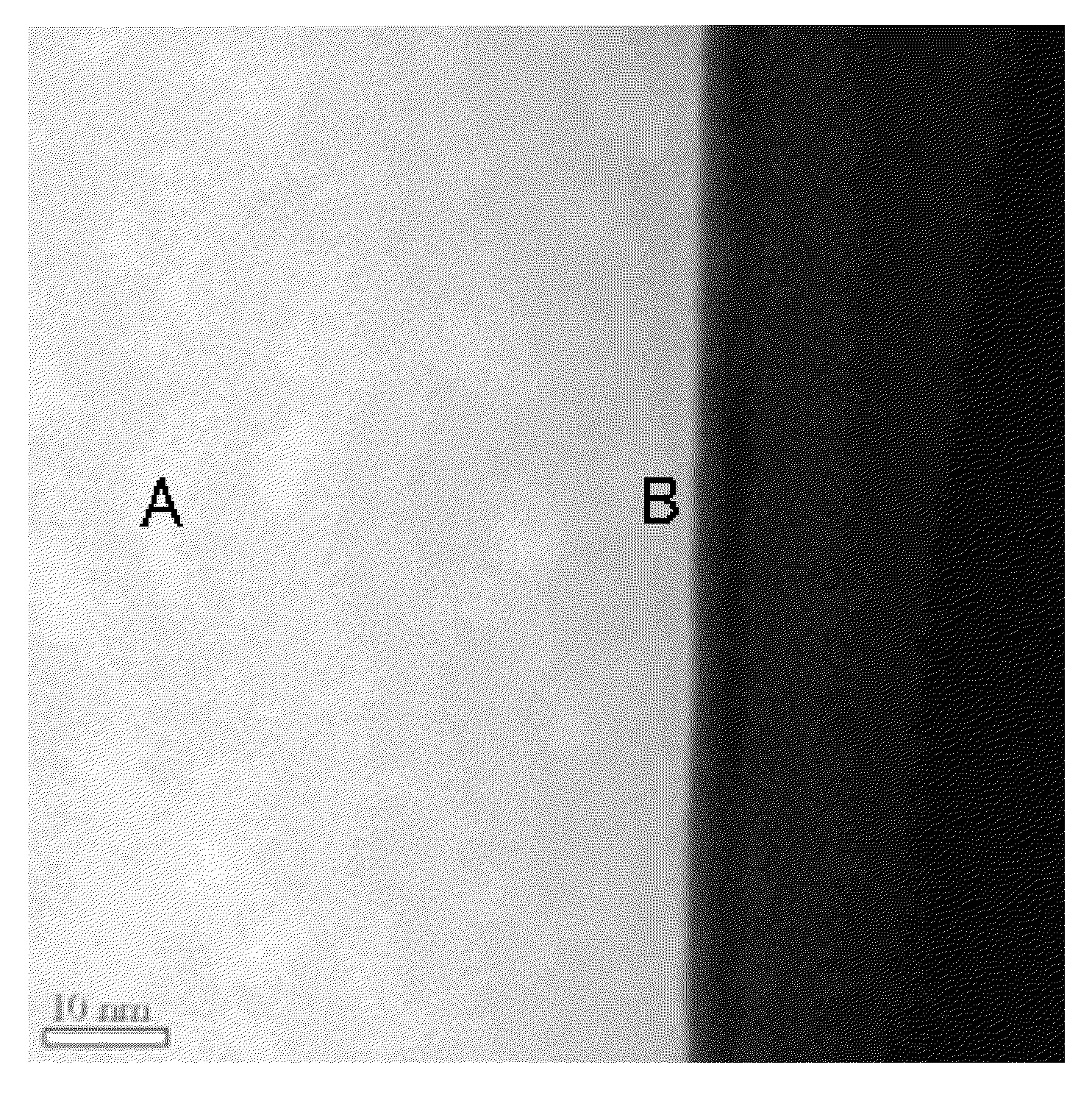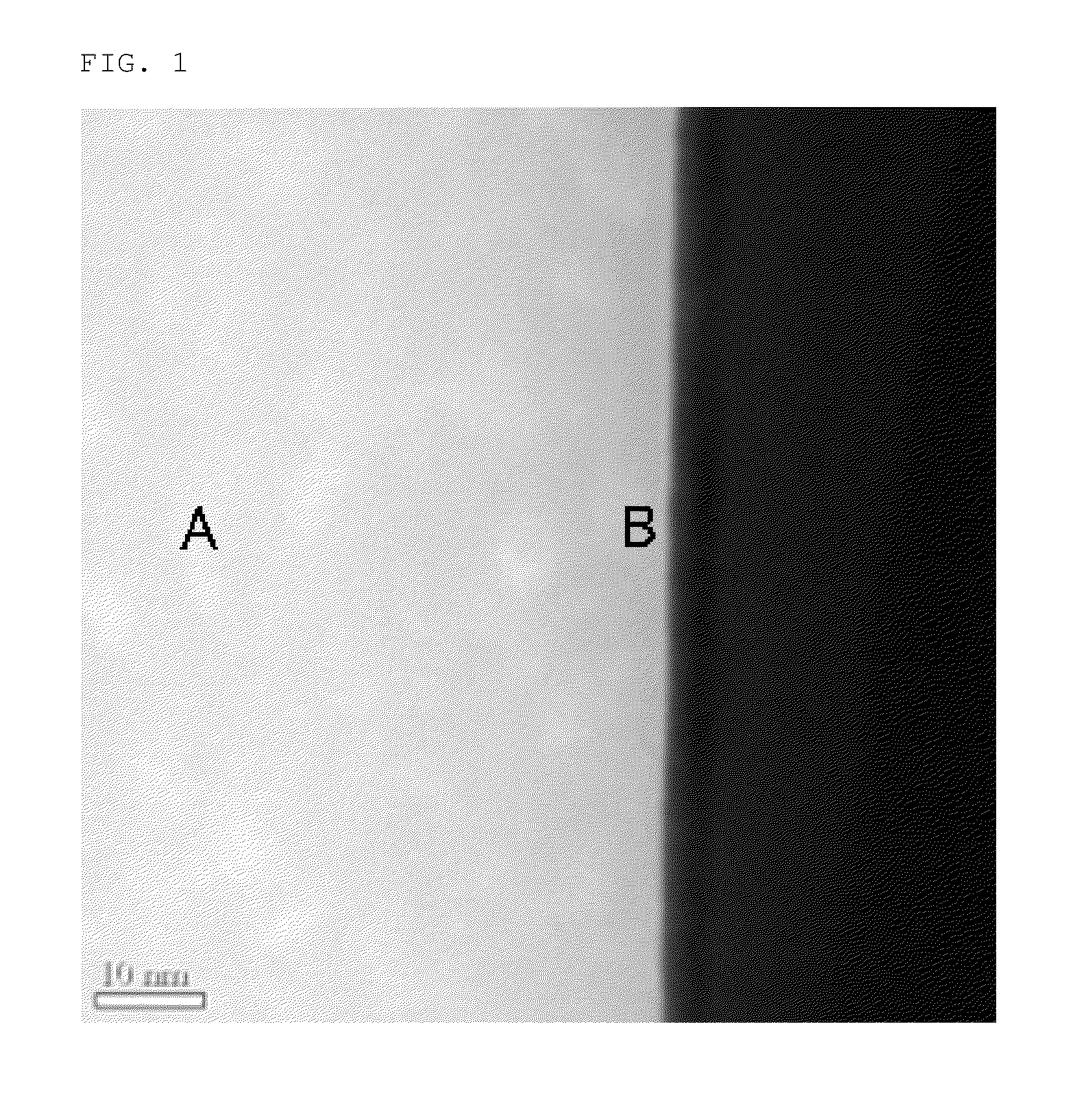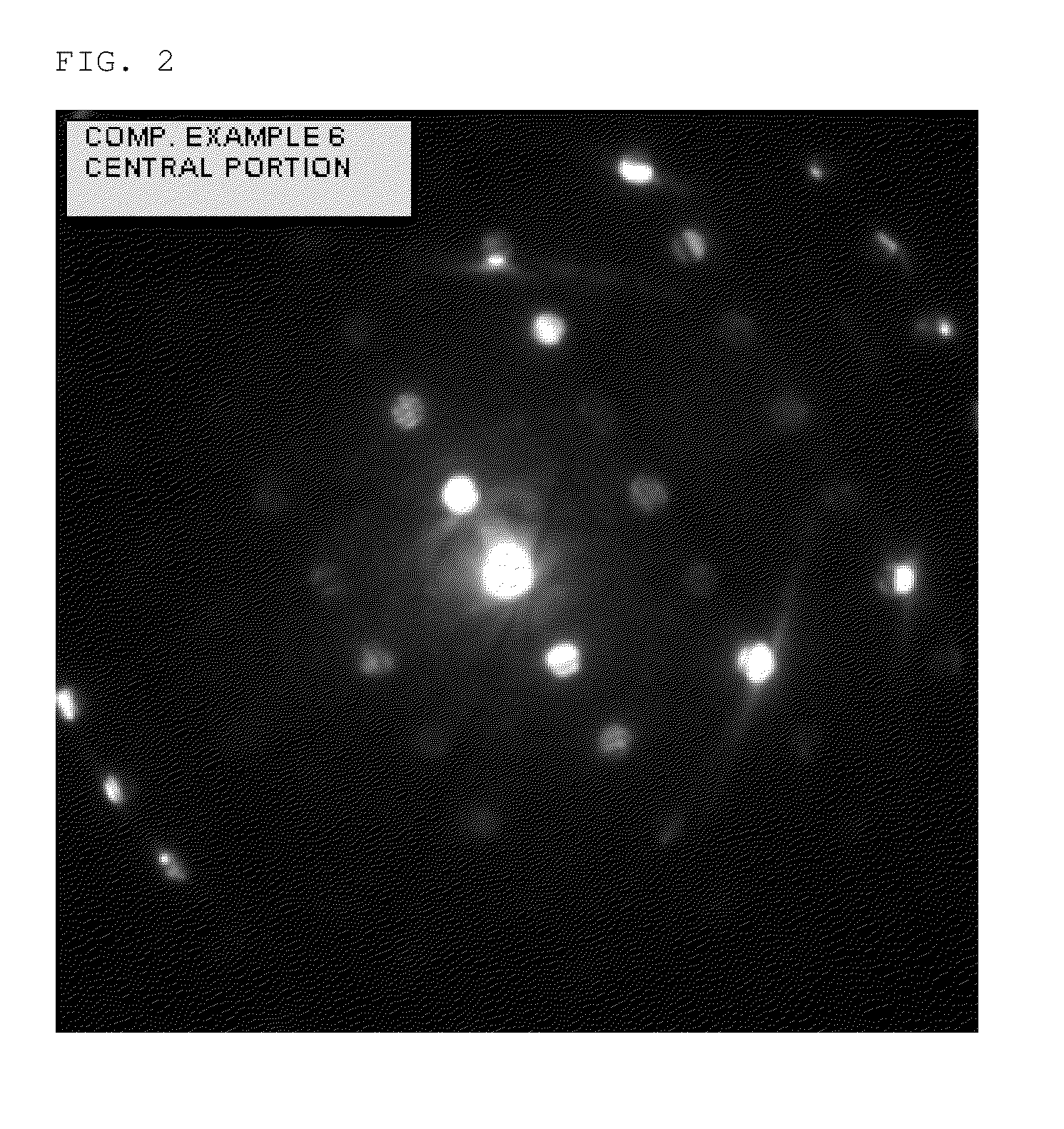Lithium composite compound particles and process for producing the same, and non-awueous electrolyte secondary battery
a composite compound and lithium composite technology, applied in nickel compounds, cell components, sustainable manufacturing/processing, etc., can solve the problems of deterioration of battery characteristics, undesirable gelation of lithium, and deterioration of thermal stability, and achieve excellent cycle characteristics and high-temperature storage properties
- Summary
- Abstract
- Description
- Claims
- Application Information
AI Technical Summary
Benefits of technology
Problems solved by technology
Method used
Image
Examples
example 1
[0105]A hydroxide comprising cobalt, nickel and manganese was mixed with lithium carbonate at such a mixing ratio that a molar ratio of Li / (Ni+Co+Mn) was 1.04, and the resulting mixture was calcined at 900° C. in an oxygen atmosphere for 10 hr to thereby obtain lithium composite compound particles. The thus obtained lithium composite compound particles were deaggregated, and 60 g of the deaggregated particles were suspended in 300 mL of pure water maintained at 20° C. The resulting suspension was stirred for 20 min and then subjected to filtration and washing.
[0106]The obtained particles were dried at 120° C. over one night, deaggregated again and then subjected to heat treatment in a decarbonated oxygen atmosphere (CO2 concentration: 20 ppm; meanwhile, the CO2 concentration in atmospheric air was 390 ppm) at 800° C. for 5 hr.
example 2
[0107]The particles obtained after the calcination in Example 1 were subjected to washing and drying in the same manner as in Example 1, and the resulting lithium composite compound particles were deaggregated and then subjected to heat treatment in a decarbonated oxygen atmosphere (CO2 concentration: 20 ppm) at 600° C. for 5 hr.
example 3
[0108]A hydroxide comprising cobalt, nickel and manganese was mixed with lithium carbonate at such a mixing ratio that a molar ratio of Li / (Ni+Co+Mn) was 1.02, and the resulting mixture was calcined at 950° C. in air for 10 hr to thereby obtain lithium composite compound particles. Sixty grams of the thus obtained lithium composite compound particles were subjected to washing and drying in the same manner as in Example 1, and the resulting particles were deaggregated and then subjected to heat treatment in a decarbonated oxygen atmosphere (CO2 concentration: 20 ppm) at 800° C. for 5 hr.
PUM
| Property | Measurement | Unit |
|---|---|---|
| average secondary particle diameter | aaaaa | aaaaa |
| specific surface area | aaaaa | aaaaa |
| temperature | aaaaa | aaaaa |
Abstract
Description
Claims
Application Information
 Login to View More
Login to View More - R&D
- Intellectual Property
- Life Sciences
- Materials
- Tech Scout
- Unparalleled Data Quality
- Higher Quality Content
- 60% Fewer Hallucinations
Browse by: Latest US Patents, China's latest patents, Technical Efficacy Thesaurus, Application Domain, Technology Topic, Popular Technical Reports.
© 2025 PatSnap. All rights reserved.Legal|Privacy policy|Modern Slavery Act Transparency Statement|Sitemap|About US| Contact US: help@patsnap.com



